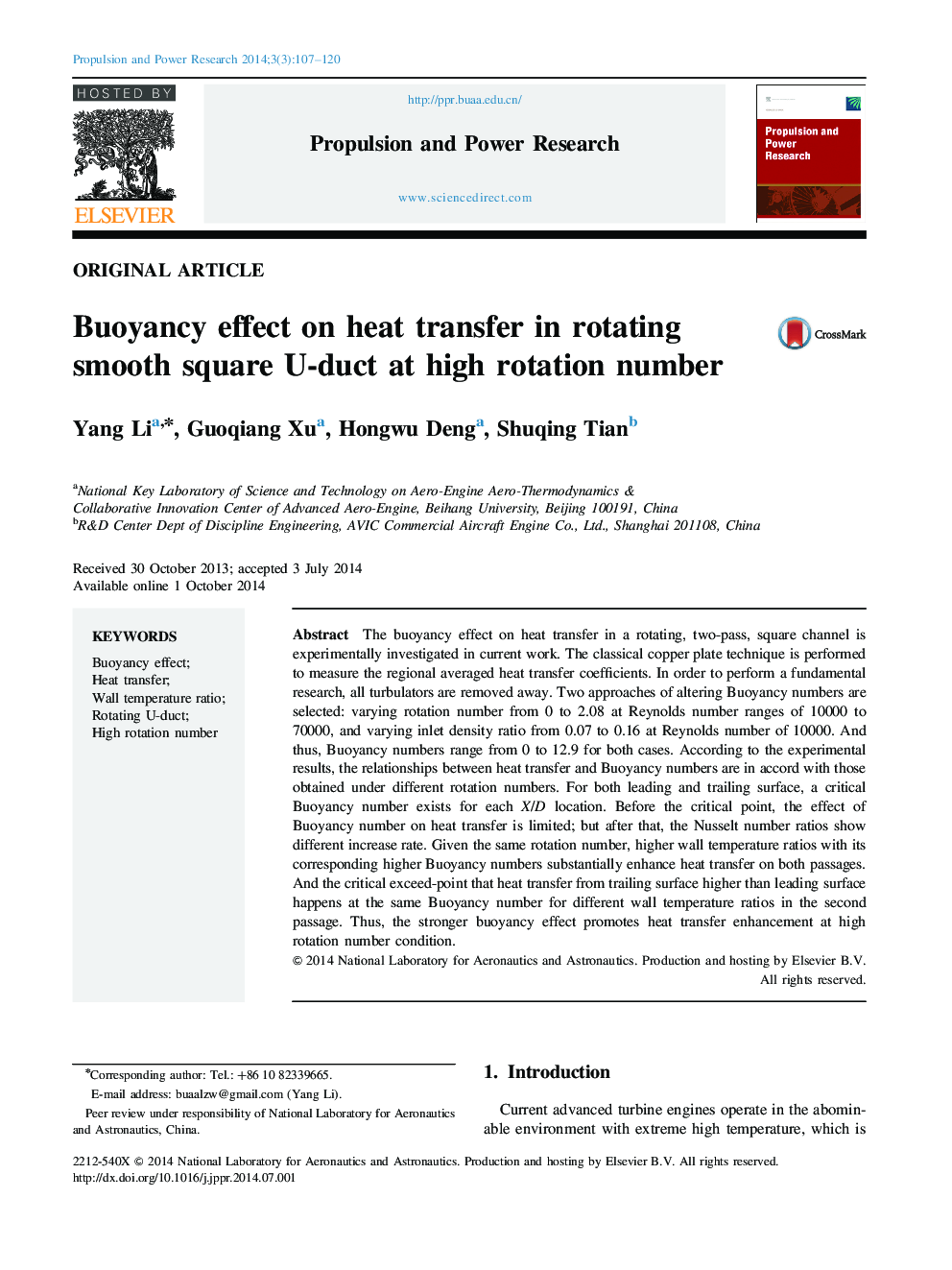| Article ID | Journal | Published Year | Pages | File Type |
|---|---|---|---|---|
| 1719663 | Propulsion and Power Research | 2014 | 14 Pages |
The buoyancy effect on heat transfer in a rotating, two-pass, square channel is experimentally investigated in current work. The classical copper plate technique is performed to measure the regional averaged heat transfer coefficients. In order to perform a fundamental research, all turbulators are removed away. Two approaches of altering Buoyancy numbers are selected: varying rotation number from 0 to 2.08 at Reynolds number ranges of 10000 to 70000, and varying inlet density ratio from 0.07 to 0.16 at Reynolds number of 10000. And thus, Buoyancy numbers range from 0 to 12.9 for both cases. According to the experimental results, the relationships between heat transfer and Buoyancy numbers are in accord with those obtained under different rotation numbers. For both leading and trailing surface, a critical Buoyancy number exists for each X/D location. Before the critical point, the effect of Buoyancy number on heat transfer is limited; but after that, the Nusselt number ratios show different increase rate. Given the same rotation number, higher wall temperature ratios with its corresponding higher Buoyancy numbers substantially enhance heat transfer on both passages. And the critical exceed-point that heat transfer from trailing surface higher than leading surface happens at the same Buoyancy number for different wall temperature ratios in the second passage. Thus, the stronger buoyancy effect promotes heat transfer enhancement at high rotation number condition.
